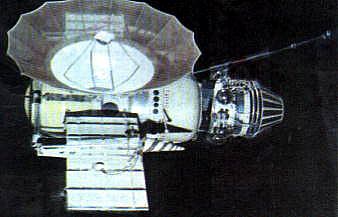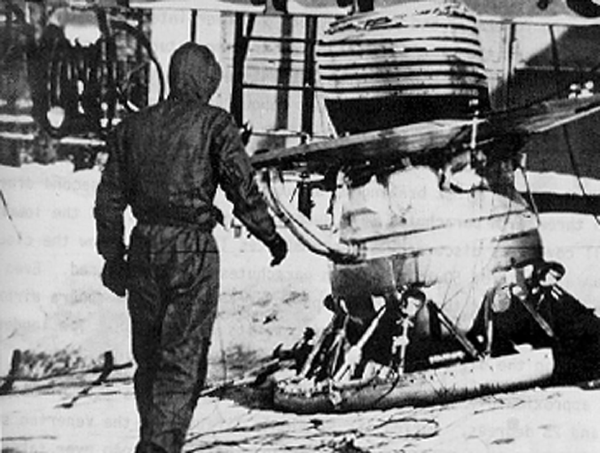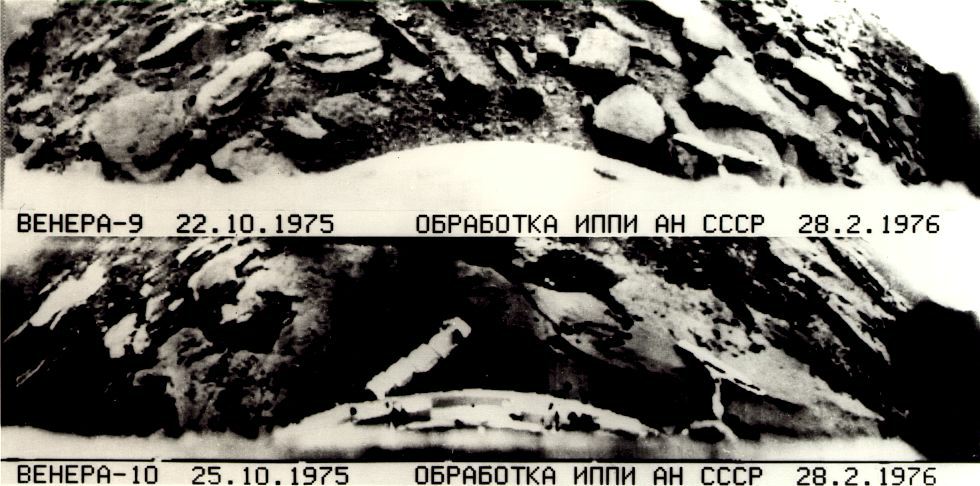Venera 4 was launched from a Tyazheliy Sputnik (67-058B) towards the planet Venus with the announced mission of direct atmospheric studies. On October 18, 1967, the spacecraft entered the Venusian atmosphere and released two thermometers, a barometer, a radio altimeter, and atmospheric density gauge, 11 gas analyzers, and two radio transmitters operating in the DM waveband.

The main bus, which had carried the capsule to Venus, carried a magnetometer, cosmic ray detectors, hydrogen and oxygen indicators, and charged particle traps. Signals were returned by the spacecraft, which braked and then deployed a parachute system after entering the Venusian atmosphere, until it reached an altitude of 24.96 km.

This spacecraft entered Venus orbit and was separated from the lander on October 20, 1975, after about 4.5 months of flight. The orbiter mission was to act as a communications relay for the lander and to explore cloud layers and atmospheric parameters with instruments including a French 3500 angstrom UV photometer, a 4000-7000 angstrom photo-polarimeter, a 1.5 to 3 micron infrared spectrometer, and a 8 - 30 micron infrared radiometer. The orbiter also carried a magnetometer and charged particle traps. Some reports indicated a camera system was also aboard. The orbiter consisted of a cylinder with two solar panel wings and a high gain parabolic antenna attached to the curved surface. A bell-shaped unit holding propulsion systems was attached to the bottom of the cylinder, and mounted on top was a 2.4 meter sphere which held the landers. At launch the Venera 9 spacecraft, including the lander, had a mass of 4936 kg.

On October 20, 1975, this spacecraft was separated from the Orbiter, and landing was made with the sun near zenith at 0513 UT on October 22. A system of circulating fluid was used to distribute the heat load. This system, plus precooling prior to entry, permitted operation of the spacecraft for 53 min after landing. During descent, heat dissipation and deceleration were accomplished sequentially by protective hemispheric shells, three parachutes, a disk-shaped drag brake, and a compressible, metal, doughnut-shaped, landing cushion. The landing was about 2,200 km from the Venera 10 landing site. Preliminary results indicated: (A) clouds 30-40 km thick with bases at 30-35 km altitude, (B) atmospheric constituents including HCl, HF, Br, and I, (C) surface pressure about 90 (earth) atmospheres, (D) surface temperature 485 deg C, (E) light levels comparable to those at earth midlatitudes on a cloudy summer day, and (F) successful TV photography showing shadows, no apparent dust in the air, and a variety of 30-40 cm rocks which were not eroded.
